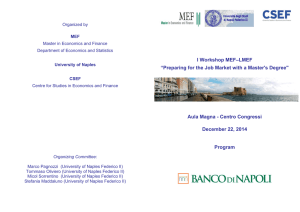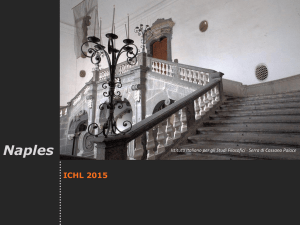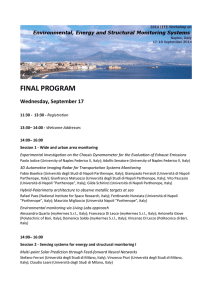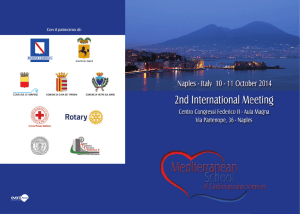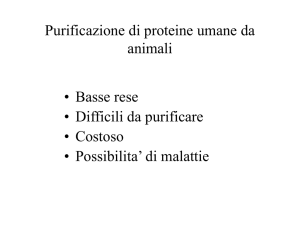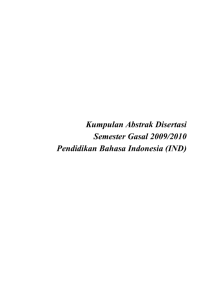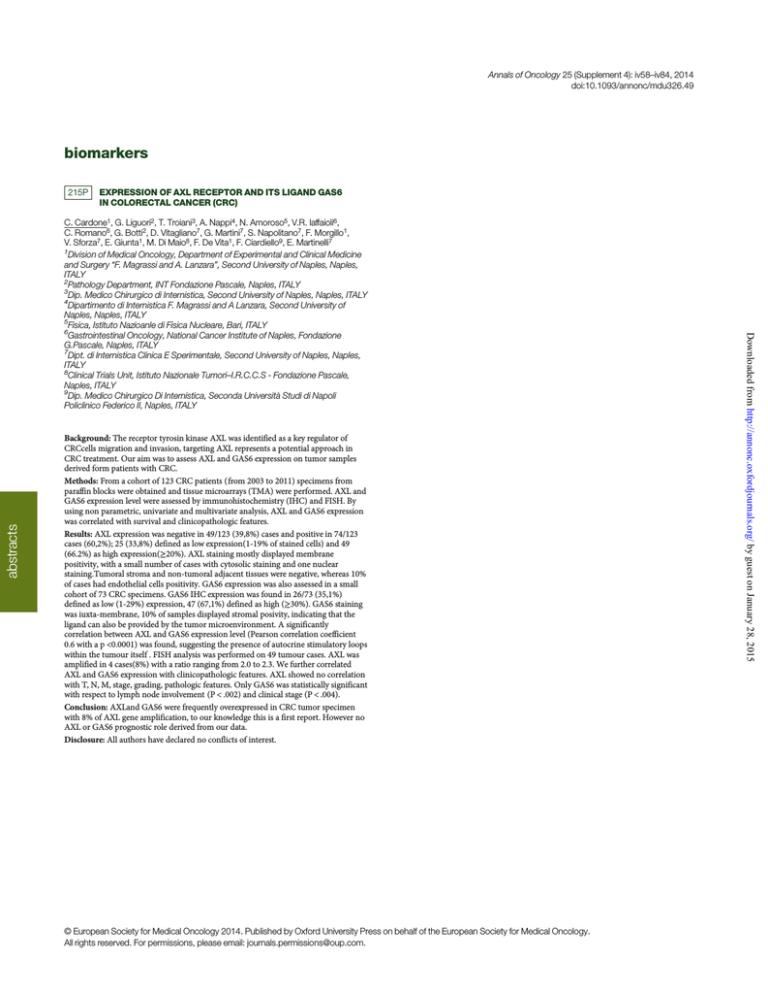
Annals of Oncology 25 (Supplement 4): iv58–iv84, 2014
doi:10.1093/annonc/mdu326.49
biomarkers
215P
EXPRESSION OF AXL RECEPTOR AND ITS LIGAND GAS6
IN COLORECTAL CANCER (CRC)
abstracts
Background: The receptor tyrosin kinase AXL was identified as a key regulator of
CRCcells migration and invasion, targeting AXL represents a potential approach in
CRC treatment. Our aim was to assess AXL and GAS6 expression on tumor samples
derived form patients with CRC.
Methods: From a cohort of 123 CRC patients (from 2003 to 2011) specimens from
paraffin blocks were obtained and tissue microarrays (TMA) were performed. AXL and
GAS6 expression level were assessed by immunohistochemistry (IHC) and FISH. By
using non parametric, univariate and multivariate analysis, AXL and GAS6 expression
was correlated with survival and clinicopathologic features.
Results: AXL expression was negative in 49/123 (39,8%) cases and positive in 74/123
cases (60,2%); 25 (33,8%) defined as low expression(1-19% of stained cells) and 49
(66.2%) as high expression(≥20%). AXL staining mostly displayed membrane
positivity, with a small number of cases with cytosolic staining and one nuclear
staining.Tumoral stroma and non-tumoral adjacent tissues were negative, whereas 10%
of cases had endothelial cells positivity. GAS6 expression was also assessed in a small
cohort of 73 CRC specimens. GAS6 IHC expression was found in 26/73 (35,1%)
defined as low (1-29%) expression, 47 (67,1%) defined as high (≥30%). GAS6 staining
was iuxta-membrane, 10% of samples displayed stromal posivity, indicating that the
ligand can also be provided by the tumor microenvironment. A significantly
correlation between AXL and GAS6 expression level (Pearson correlation coefficient
0.6 with a p <0.0001) was found, suggesting the presence of autocrine stimulatory loops
within the tumour itself . FISH analysis was performed on 49 tumour cases. AXL was
amplified in 4 cases(8%) with a ratio ranging from 2.0 to 2.3. We further correlated
AXL and GAS6 expression with clinicopathologic features. AXL showed no correlation
with T, N, M, stage, grading, pathologic features. Only GAS6 was statistically significant
with respect to lymph node involvement (P < .002) and clinical stage (P < .004).
Conclusion: AXLand GAS6 were frequently overexpressed in CRC tumor specimen
with 8% of AXL gene amplification, to our knowledge this is a first report. However no
AXL or GAS6 prognostic role derived from our data.
Disclosure: All authors have declared no conflicts of interest.
© European Society for Medical Oncology 2014. Published by Oxford University Press on behalf of the European Society for Medical Oncology.
All rights reserved. For permissions, please email: journals.permissions@oup.com.
Downloaded from http://annonc.oxfordjournals.org/ by guest on January 28, 2015
C. Cardone1, G. Liguori2, T. Troiani3, A. Nappi4, N. Amoroso5, V.R. Iaffaioli6,
C. Romano6, G. Botti2, D. Vitagliano7, G. Martini7, S. Napolitano7, F. Morgillo1,
V. Sforza7, E. Giunta1, M. Di Maio8, F. De Vita1, F. Ciardiello9, E. Martinelli7
1
Division of Medical Oncology, Department of Experimental and Clinical Medicine
and Surgery “F. Magrassi and A. Lanzara”, Second University of Naples, Naples,
ITALY
2
Pathology Department, INT Fondazione Pascale, Naples, ITALY
3
Dip. Medico Chirurgico di Internistica, Second University of Naples, Naples, ITALY
4
Dipartimento di Internistica F. Magrassi and A Lanzara, Second University of
Naples, Naples, ITALY
5
Fisica, Istituto Nazioanle di Fisica Nucleare, Bari, ITALY
6
Gastrointestinal Oncology, National Cancer Institute of Naples, Fondazione
G.Pascale, Naples, ITALY
7
Dipt. di Internistica Clinica E Sperimentale, Second University of Naples, Naples,
ITALY
8
Clinical Trials Unit, Istituto Nazionale Tumori–I.R.C.C.S - Fondazione Pascale,
Naples, ITALY
9
Dip. Medico Chirurgico Di Internistica, Seconda Università Studi di Napoli
Policlinico Federico II, Naples, ITALY

